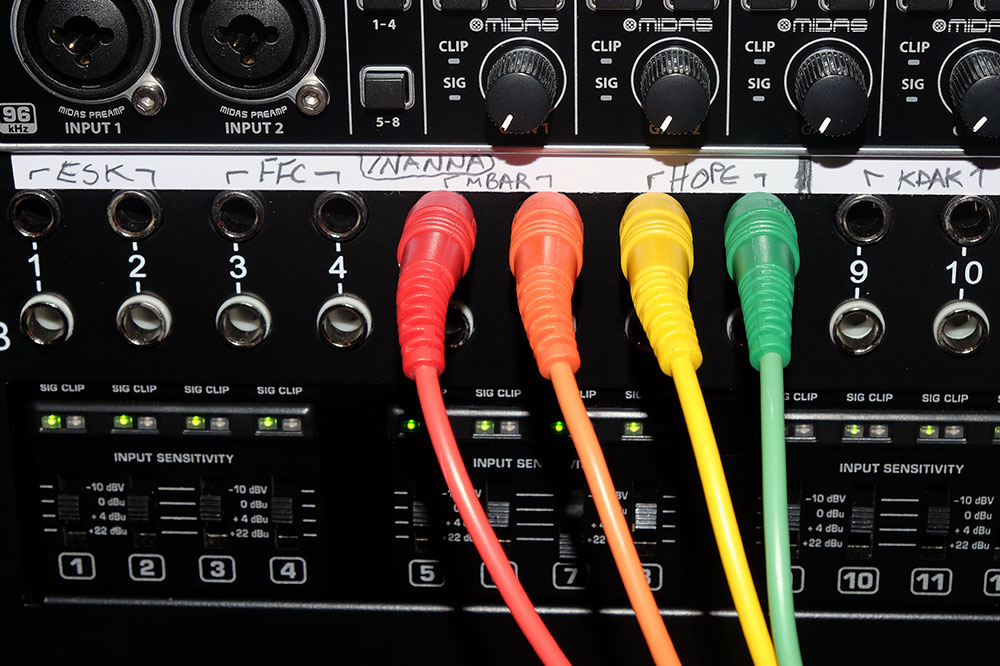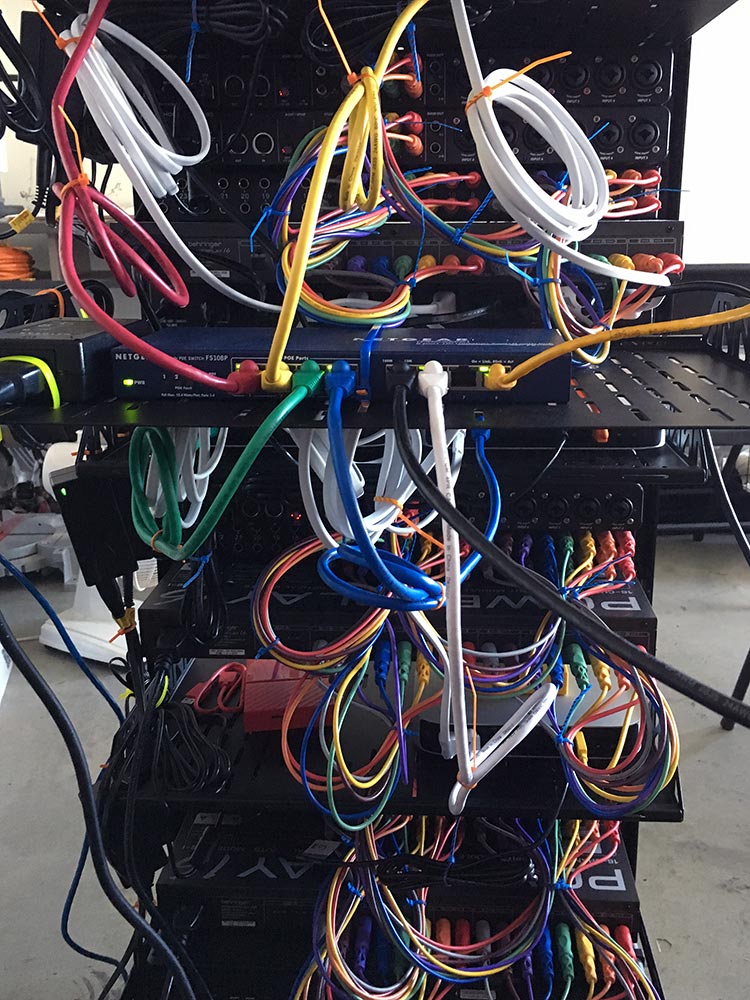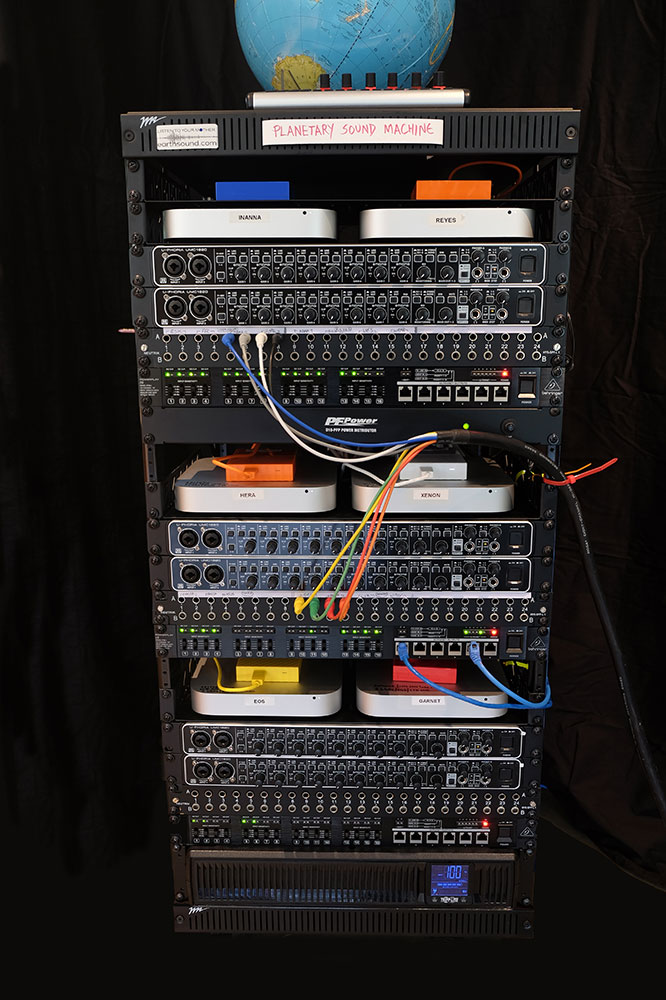The Planetary Sound Machine is a cluster of small computers that sustain the beating heart of the Earthsound Project. Its job is to continuously gather data from seismic and atmospheric sensors around the world, convert them to audible sound, and stream the audio in near-real-time for all to hear.
The Machine is built from a number of independent modules, or "pods", each of which consists of a single Mac Mini computer that runs several concurrent instances of my homebrew audification software (one instance for each sensor). The software harvests data in near-real-time from the IRIS datacenter and other sources, resamples them, converts them to audio, and applies the appropriate filters and companders. The resulting audio (up to six or seven stereo feeds per pod) is streamed to a SHOUTcast server and then delivered to listeners around the world. Every few minutes each pod also delivers to the Earthsound Project's website the latest spectrograms and event lists (notable earthquakes, storms, etc.) for each of the stations it serves, as well as the pod's own diagnostic data.
The first incarnation (2015-2018) of the Machine lived in my studio, where the pods were connected to rack-mounted audio interfaces and patch bays that allowed for flexible re-routing of audio channels to other destinations (for example, to Earthsound Radio). Watching the Machine humming away after dark was a particular delight: with a little imagination the twinkling lights that flash in response to the planet's vibrations would resemble a gathering of summer fireflies (short video on YouTube).
In 2019 I moved the Machine to some rented servers scattered through the the cloud. Gone are the twinkling lights from my studio, but at least now I don't have to spend so much time crawling behind racks of hardware to chase down sketchy audio and signal cables.

Detail of the audio patchbay for seismic stations in Scotland (ESK), Canada (FFC), Uganda (MBAR), the South Atlantic Ocean (HOPE), and Alaska (KDAK). The computer handling these stations is named Inanna, after the ancient Sumerian goddess of love, beauty, sex, and war.

"Wait a sec, does the blue ¼″ TRS cable go to channel 11 of the interface output or to channel 3 of the mixer input??"
A gallery of screenshots
 |
 |
 |
 |
 |
 |
 |
 |
 |
 |
